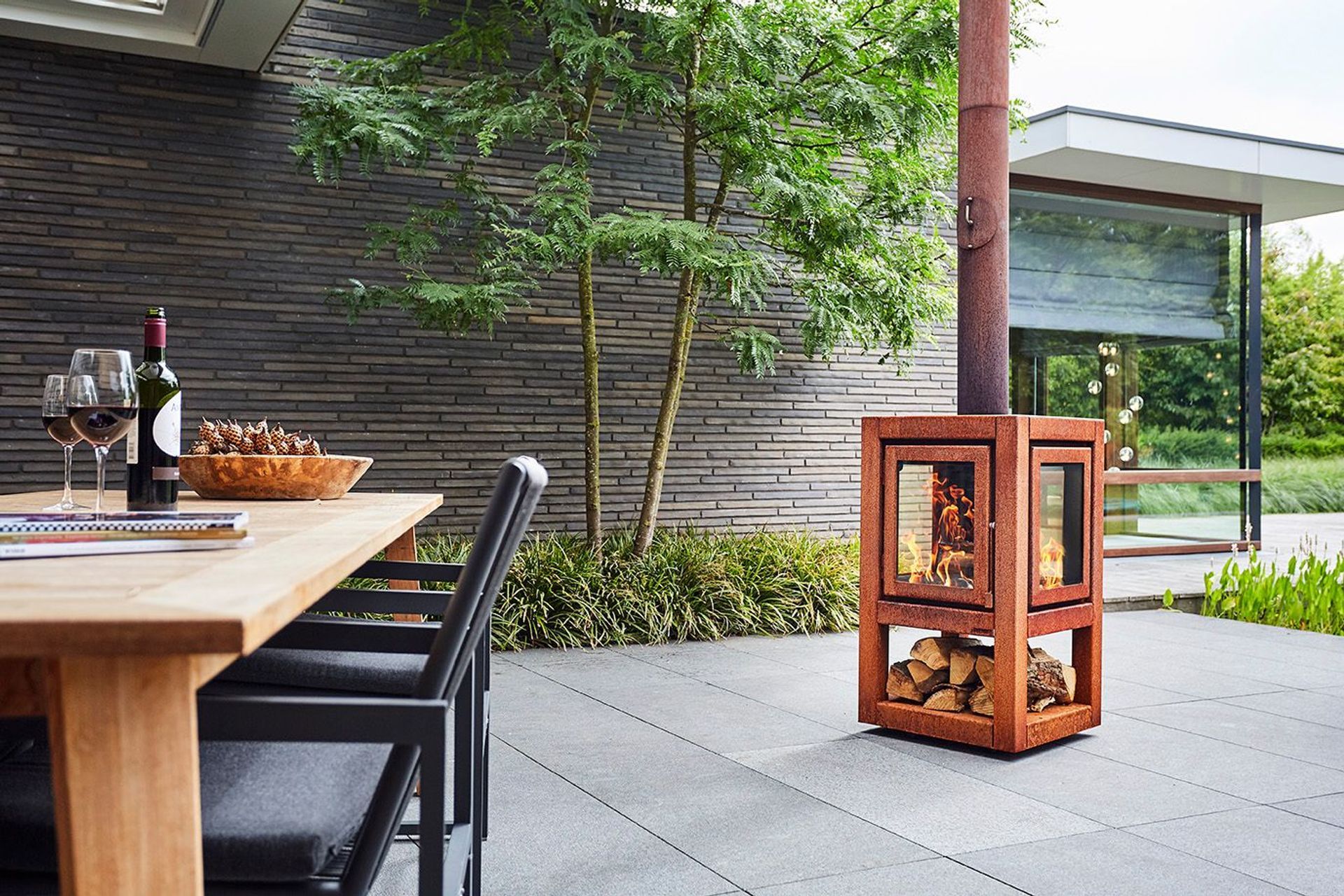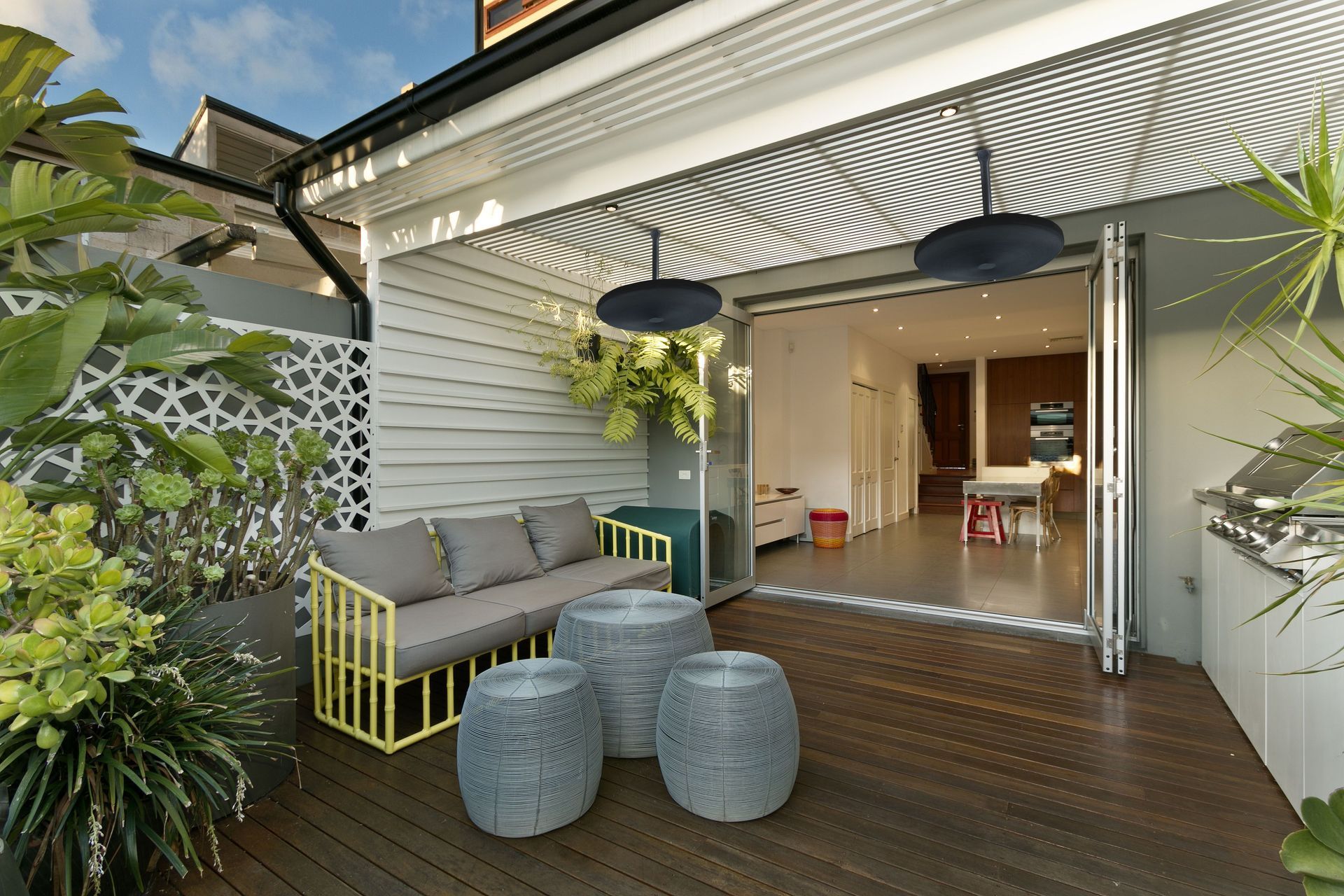How to choose the best cost-effective outdoor heating

When you have an outdoor heat source, you don't have to limit your enjoyment of outdoor living spaces to the warmer months; the right heating solution in the right spot can keep you and everyone you're entertaining comfortable and warm.
But as with indoor heating technologies, not every method for keeping your outdoor areas warm costs the same to run. Key, then, is finding an option that both fits your heating needs and your budget.
Here's how to choose a cost-effective outdoor heating solution.
What costs are there to consider with outdoor heating?
There are two main costs to consider when choosing an outdoor heater, fire or burner: the purchase price and the running cost.
The purchase price is paid upfront and the running costs are paid in direct proportion to how much the heat source is used over its lifetime. There is sometimes a tradeoff to be made between purchase price and running costs: more efficient models that get more heat from every dollar's worth of fuel sometimes cost more up front, as they use more advanced technology to achieve their greater efficiency.
This tension between running costs and purchase price doesn't always hold, but it's important to notice when it does, as it can change what heater will be most cost efficient for your specific needs.
If you're someone who will only use their outdoor heater or fire occasionally, an option with lower purchase price but more expensive per hour running cost might be appropriate. On the other hand, if your outdoor heater will be used often, the investment into a higher priced but cheaper-to-run heater or fire may be worth it.
What outdoor heater fuel is best?
Outdoor heaters and fires primarily work by outputting radiant heat. Instead of heating the air and moving it around a room like a convection heater, radiant heaters use infrared radiation to heat people and objects directly, while fires generate a mix of radiant and convection.
This is much more effective when heating outdoors: convection heating in this environment is very ineffective, because with no way to trap the heated air, it simply rises away.
Outdoor heaters and burners that generate radiant heat run on three main kinds of fuels: wood, gas, and electricity.
Wood
If you can get steady supply and have enough room to store it, wood is one of the cheapest fuels available. A wood fireplace can output a lot of heat while adding visual flair to your outdoor space. Fireplaces come in many varieties and prices, from the small and portable to the large and in-built, complete with flue and surround.
If a fireplace doesn't suit, a similar alternative is a firepit. Essentially, a firepit is like a large bowl in which your open fire can burn. They're generally cheaper than an inset fireplace, as installation costs are usually lower and there just aren't as many moving parts.
An alternative to burning traditional wood logs is wood pellets. The pellets are made from industrial off-cuts, wood shavings and sawdust and are incredibly energy dense, as much of the air and moisture that's present in a regular piece of wood has been squashed away.
Pellets are usually a little more expensive than traditional firewood, but they're still at the lower end of the cost scale. If you don't have the room to store firewood, pellets are a good way to achieve similar heating performance to a woodburner.
Gas
Gas heaters provide instant radiant heat that's easy to control. Gas heaters or fires that are connected to mains lines are the cheapest kind to run, but they can be more expensive to have connected and installed, and aren't as versatile in terms of how they can be moved about.
Portable gas heaters, on the other hand, run on interchangeable LPG gas bottles. They are at the more expensive end of outdoor heaters to run, but offer versatility and for those in the South Island where natural gas lines aren't available, the benefits of gas heating that otherwise wouldn't be possible.
Electricity
Some of the same rules of thumb for indoor heating apply to outdoor heating too, most pointedly that electrical heaters generally cost the most to run. That said, electric radiant heaters can be effective for heating where heaters can be strategically placed above tables and chairs, or around areas of congregation.
Be sure to choose an electric heater that has sufficient output for the area you're trying to heat. Some radiant heaters are relatively low wattage and therefore don't use much electricity but don't put out all that much heat either.
For more inspiration, browse through our range of outdoor heating products.
<sup>Top banner image credit: </sup><sup>The Fire Dept</sup>


